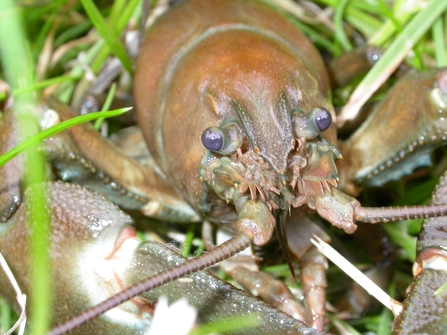Did you know that over 2,000 plants and animals have been introduced to Great Britain from all over the world? Many of these non-native species coexist with us without harm however, around 10-15% are problematic. On a global scale, the spread of species which have been introduced by humans rather than nature is one of the top five reasons for biodiversity loss. In Hertfordshire and Middlesex, they threaten our native wildlife, can be harmful to human health, destroy our landscapes and impact on us being able to enjoy the countryside in the way that we should be able to.
On a local level, The Trust’s Living Rivers project aims to protect and improve the precious chalk streams we have in Hertfordshire. There are only around 220 chalk streams globally, and around 10% of these are in our county. In prime condition, these should have gentle sloping banks and glass-clear water babbling over gravel. However, these natural gems and the wildlife that they support are threatened by non-native invasive species, with key culprits being Himalayan Balsam, Giant Hogweed, American Mink and Signal Crayfish. Fortunately, we are not alone in recognising how destructive these species can be and we are working with and alongside multiple organisations and volunteers on several active projects. It is a problem on a major scale and tackling it is labour intensive – there is plenty of room for more groups and individuals to get on board and help to protect our globally rare chalk river landscape.








